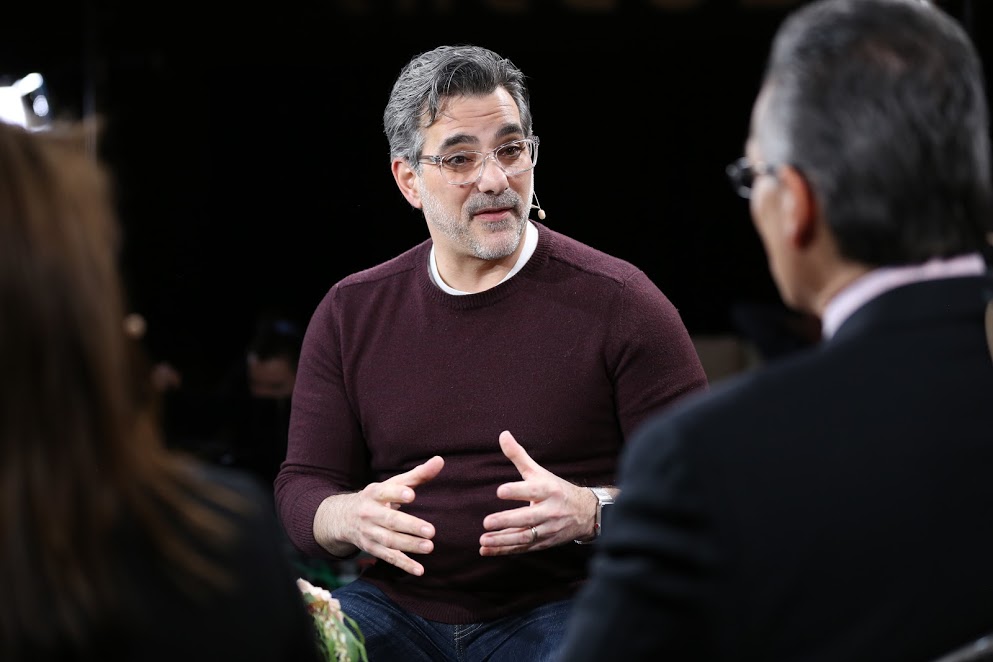 BIG DATA
BIG DATA
 BIG DATA
BIG DATA
 BIG DATA
BIG DATA
Running a data analytics division inside a large company today is like being the head coach at a football all-star game. Everyone on the field has a different-looking helmet, but they still need to work together as a team.
At any given time, an analytics group might have machine learning engineers, predictive analytics engineers, data engineers and even data journalists. “I know a total of two people who can do that all themselves, so it absolutely is a team sport,” said Seth Dobrin (pictured), vice president and chief data officer of analytics at IBM Corp. “We’re focused on helping IBM and other companies do data science in the enterprise.”
Dobrin spoke with Dave Vellante (@dvellante) and Lisa Martin (@LuccaZara), co-hosts of theCUBE, SiliconANGLE Media’s mobile livestreaming studio, at the BigData SV event in San Jose, California. They discussed the continued role of math and statistics in data analytics, the evolution of machine learning techniques, and the impact of data privacy regulation on artificial intelligence.
As the field of data analytics has evolved, some constants haven’t changed. Math and statistics are still a major part of the process, areas that Dobrin used extensively when he was a Ph.D. student 20 years ago.
What has changed is the long view in use cases as machine learning demands being able to predict not just future action, but the behavior leading up to it.
“I would build a model to predict something, and it was only for that; you really didn’t apply it beyond,” Dobrin explained. “Now when we’re talking about machine learning, I want to understand Dave, and I want to be able to predict Dave’s behavior in the future and learn how you’re changing your behavior over time.”
The coming of the General Data Protection Regulation affecting the handling of digital information about European citizens will create a new dynamic for data analytics. The law, which goes into effect on May 25, requires a clear understanding of consent on the part of users whose data is gathered through a variety of ways. And it will likely require executives like Dobrin to explain the methodology behind data gathering and analysis, a process known as explainable artificial intelligence, or XAI.
“You need to be able to explain your decision, how you used analytics, how you got to that decision to an auditor if they request it,” Dobrin said. “As you get into deep learning, this concept of explainable or XAI becomes really important.”
Watch the complete video interview below, and be sure to check out more of SiliconANGLE’s and theCUBE’s coverage of the BigData SV event.
Support our open free content by sharing and engaging with our content and community.
Where Technology Leaders Connect, Share Intelligence & Create Opportunities
SiliconANGLE Media is a recognized leader in digital media innovation serving innovative audiences and brands, bringing together cutting-edge technology, influential content, strategic insights and real-time audience engagement. As the parent company of SiliconANGLE, theCUBE Network, theCUBE Research, CUBE365, theCUBE AI and theCUBE SuperStudios — such as those established in Silicon Valley and the New York Stock Exchange (NYSE) — SiliconANGLE Media operates at the intersection of media, technology, and AI. .
Founded by tech visionaries John Furrier and Dave Vellante, SiliconANGLE Media has built a powerful ecosystem of industry-leading digital media brands, with a reach of 15+ million elite tech professionals. The company’s new, proprietary theCUBE AI Video cloud is breaking ground in audience interaction, leveraging theCUBEai.com neural network to help technology companies make data-driven decisions and stay at the forefront of industry conversations.